Men’s Jewellery Trends 2025: Regal Accessories For The Modern-Day Groom
From emerald malas to heirloom sarpechs, Indian grooms in 2025 are embracing jewellery not just as adornment—but as expression, tradition, and personal legacy
In 2025, the Indian groom’s trousseau is no longer limited to silk stoles, mojaris, or a single heirloom ring. It now features exquisite heritage jewellery pieces—sarpechs, haars, jewelled buttons, and brooches that reflect a return to regal masculinity. Here’s a deep dive into some of the best luxe bejewelled pieces that define this aesthetic revolution.
The Resurgence of the Sarpech: A Crown Jewel for the Groom
Once reserved for kings and nawabs, the sarpech, or turban ornament, has made a grand comeback—this time on the heads of modern Indian grooms. Traditionally worn to signify valour and nobility, the sarpech in 2025 is a statement of cultural pride and aesthetic boldness.
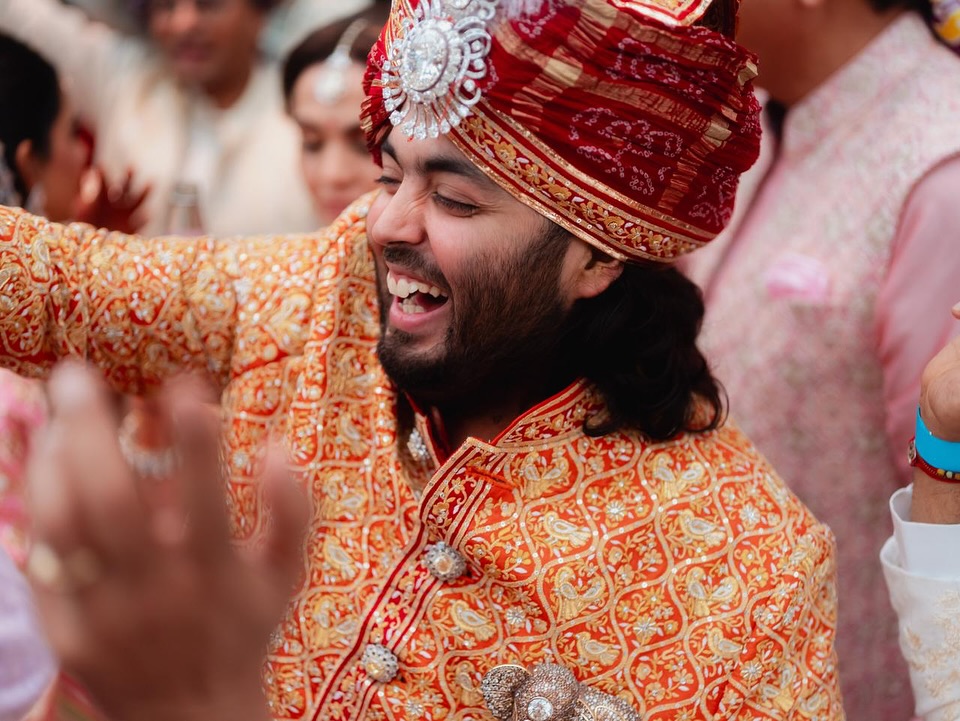
A spectacular example of this was seen at Anant Ambani’s wedding, where his ornate sarpech, designed by Chhota Lal & Sons, was the crowning jewel of his wedding attire. Personally styled by Nita Ambani, the piece fused Mughal-era design sensibilities with contemporary grandeur, incorporating uncut diamonds, Colombian emeralds, and enamel work that reflected the family’s penchant for heritage craftsmanship. Whether worn atop a pastel-coloured turban or a richly embroidered one, the sarpech is no longer a relic of the past—it’s an heirloom reimagined for today’s groom.
Modern iterations include detachable kalgi clips, feather-accented pieces, and diamond-studded variations that double as brooches or can even be passed down to the next generation as family treasures.
ALSO READ: 7 Unconventional High Jewellery Trends For The Modern Indian Bride
The String of Pearls: Quiet Sophistication in a Single Strand
Pearls aren’t just for maximalists. In 2025, the single or double string of fine pearls has emerged as a minimalist groom’s signature—a piece that whispers elegance rather than shouts for attention. Ranbir Kapoor epitomized this approach at his intimate wedding to Alia Bhatt, wearing a sleek strand of lustrous pearls that subtly contrasted his cream-gold Sabyasachi sherwani. The look was clean, classic, and deeply romantic—a nod to old-world charm that felt refreshingly modern.
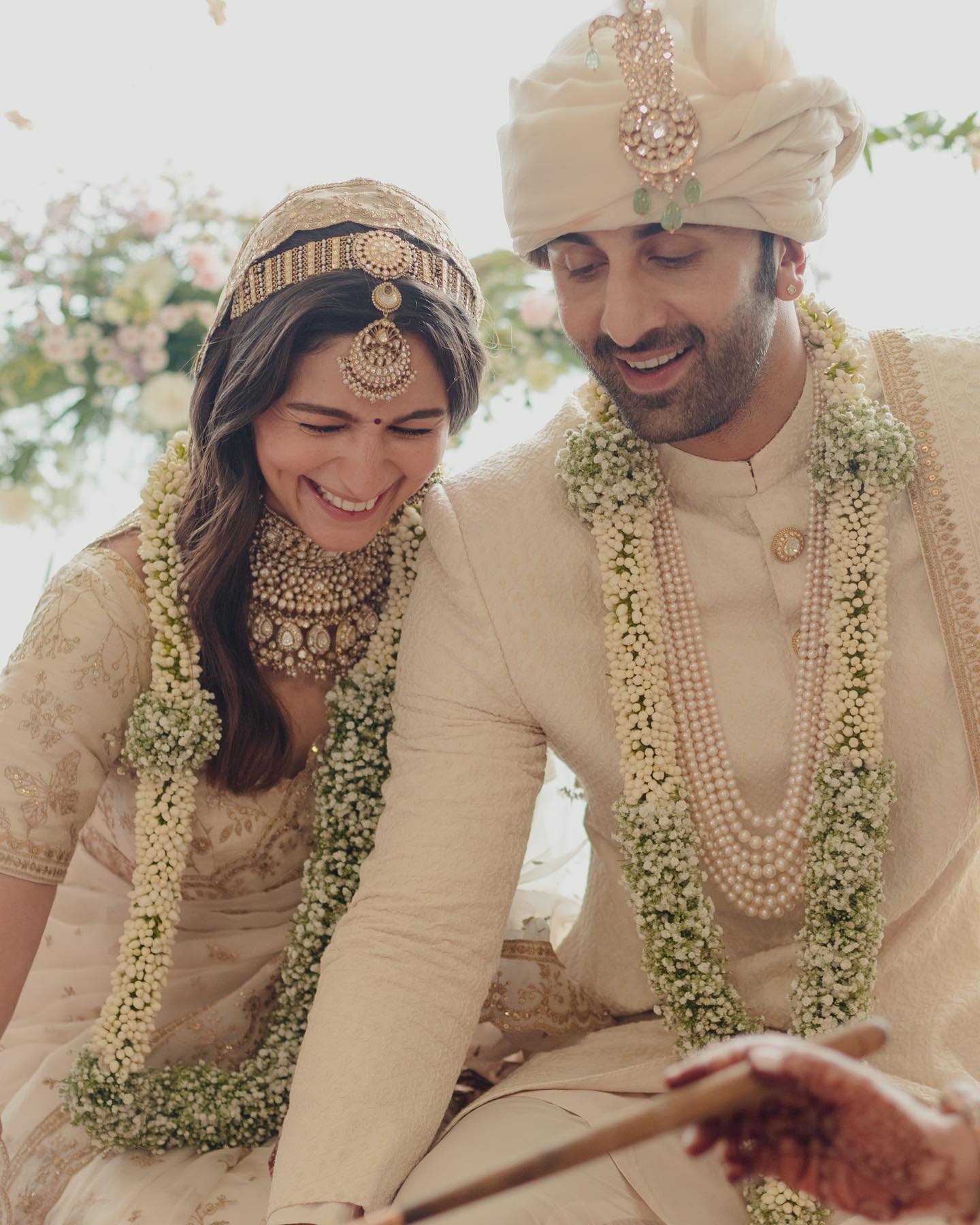
Today’s grooms are embracing this refined aesthetic, pairing delicate pearl strands with monochrome or ivory sherwanis. Bespoke options from designers like Birdhichand Ghanshyamdas or House of Umrao allow for custom pearl sizes, navratna spacers, or personal engraving. The result? A sentimental and stylish heirloom that doesn’t overpower the look, yet leaves a lasting impression.
The Emerald Maharaja Necklace: A Nod to Ranveer Singh’s Maximalism
For grooms who aren’t afraid of making a grand statement, nothing speaks louder than a bold, emerald-studded necklace. Deep green stones have always been associated with power, prosperity, and poise—qualities that many modern grooms want to channel on their wedding day.
Few did it with more impact than Ranveer Singh at his Lake Como wedding. Over his intricately embroidered Sabyasachi sherwani, Ranveer wore multiple strands of uncut diamonds and emeralds, echoing royal portraits from Rajasthan and Persia. The emerald necklace—bold, bejewelled, and unapologetically ornate—instantly became iconic. It helped redefine how men could embrace maximalism without looking theatrical.
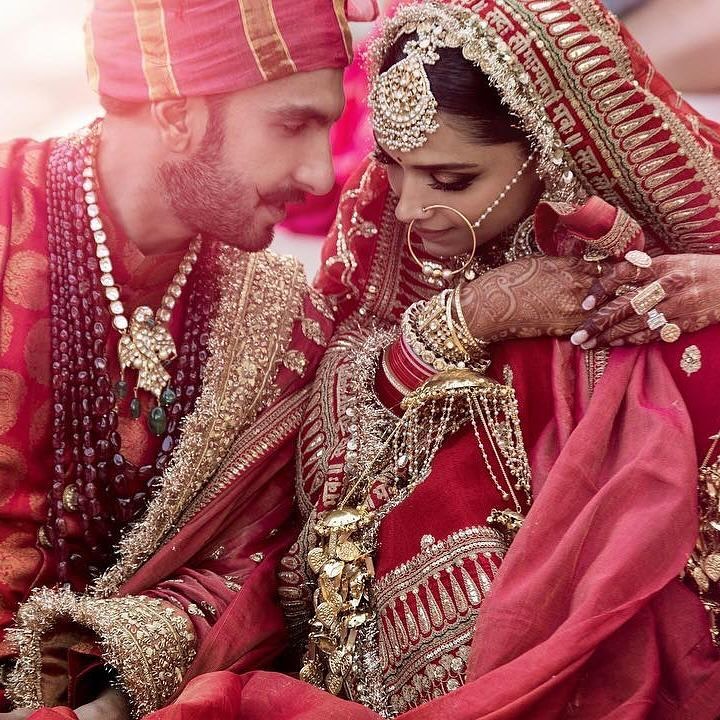
Inspired by this, brands like Sabyasachi Fine Jewellery, Birdhichand Ghanshyamdas, and Hazoorilal Legacy have started offering multi-strand emerald malas specifically designed for men. These often include alternating polki elements, enamel backings, and hand-strung beads that feel both regal and rooted.
The Kalgi Reimagined: Regal Headpieces for the Modern Groom
Traditionally perched atop a groom’s turban, the kalgi is a head ornament that symbolises nobility, victory, and pride—worn by Indian royalty across centuries. In 2025, this storied accessory has returned in full glory, with grooms embracing elaborate, gem-studded designs that elevate the entire look.
ALSO READ: Priyanka Chopra’s Most Iconic Jewellery Looks On Her Birthday
A standout example was Vicky Kaushal at his wedding to Katrina Kaif. Styled in an ivory Sabyasachi sherwani and a matching turban, Vicky wore a statement kalgi crafted with pearls and uncut The piece was regal yet restrained—perfectly in line with his understated aesthetic and yet commanding enough to signal grandeur. The kalgi complemented his polki necklace and added a timeless heirloom quality to his modern groom ensemble.
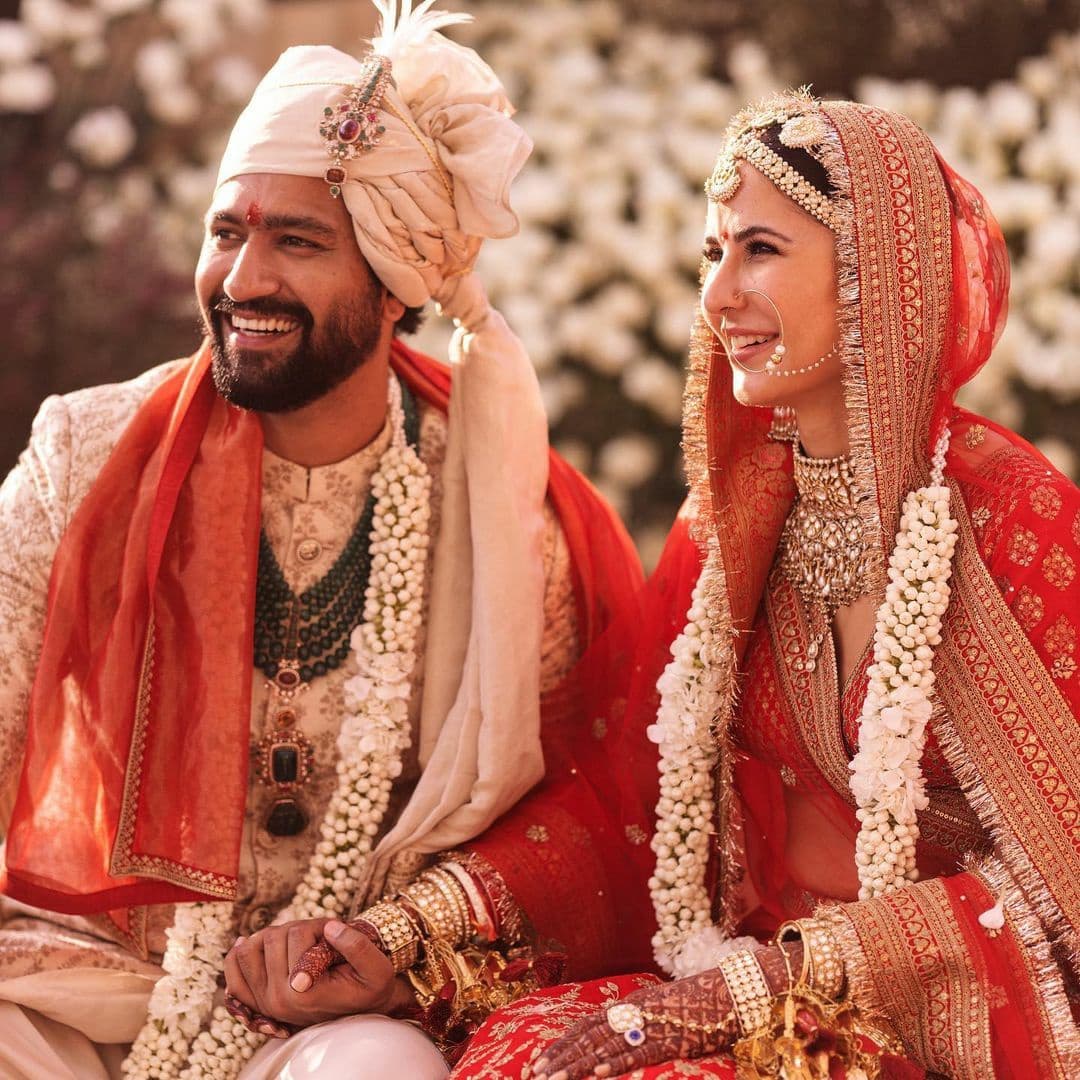
Design houses like Sabyasachi Heritage Jewellery, Khanna Jewellers, and Hazoorilal Legacy now offer kalgis in custom designs—some featuring navratna stones, others echoing Mughal or Rajput silhouettes. Many are detachable, allowing the ornament to be worn as a brooch or passed down as a family heirloom. For today’s groom, the kalgi is more than ornamentation—it’s a crowning touch that nods to tradition while embracing individual style.
The Legacy of Polki: Craftsmanship Carved in Time
If there’s one gemstone that defines Indian bridal opulence, it’s polki—uncut diamonds set in traditional settings that carry a legacy of royal refinement. In 2025, grooms are making bold statements with layered polki necklaces, drawing from centuries of regal tradition. One such striking example was Armaan Malik, who wore a multi-string polki haar at his wedding to Aashna Shroff. Styled with a rich ivory ensemble, his necklace featured oversized uncut diamonds and intricate gold detailing, effortlessly blending old-world craftsmanship with modern-day sophistication.
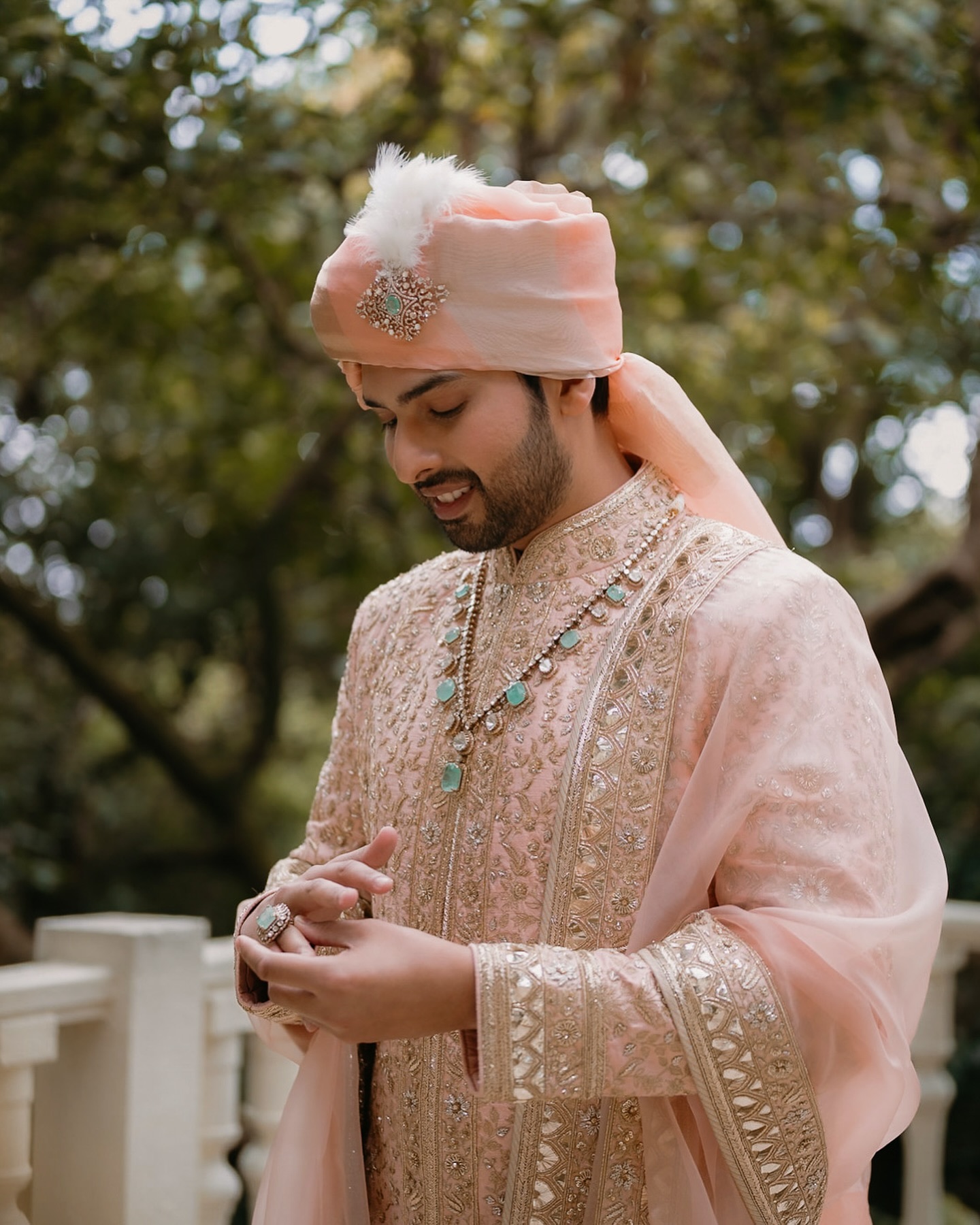
Luxury jewellers like Raniwala 1881, Hazoorilal Legacy, and Khurana Jewellery House are now crafting made-to-measure polki sets specifically for grooms. Whether worn as a single raani haar or stacked in multiples, polki jewellery today offers gravitas and glamour, making it the centrepiece of the contemporary groom’s wedding attire.
Jewelled Buttons & Kurta Pins: Understated, Personal, Perfect
For the contemporary groom who enjoys detail but avoids heavy jewellery, bejewelled buttons and kurta pins are the ultimate finishing touch. These tiny but powerful accents bring an artisanal layer to the outfit—think navratna-set buttons, engraved gold motifs, or enamel designs that match the wedding palette.
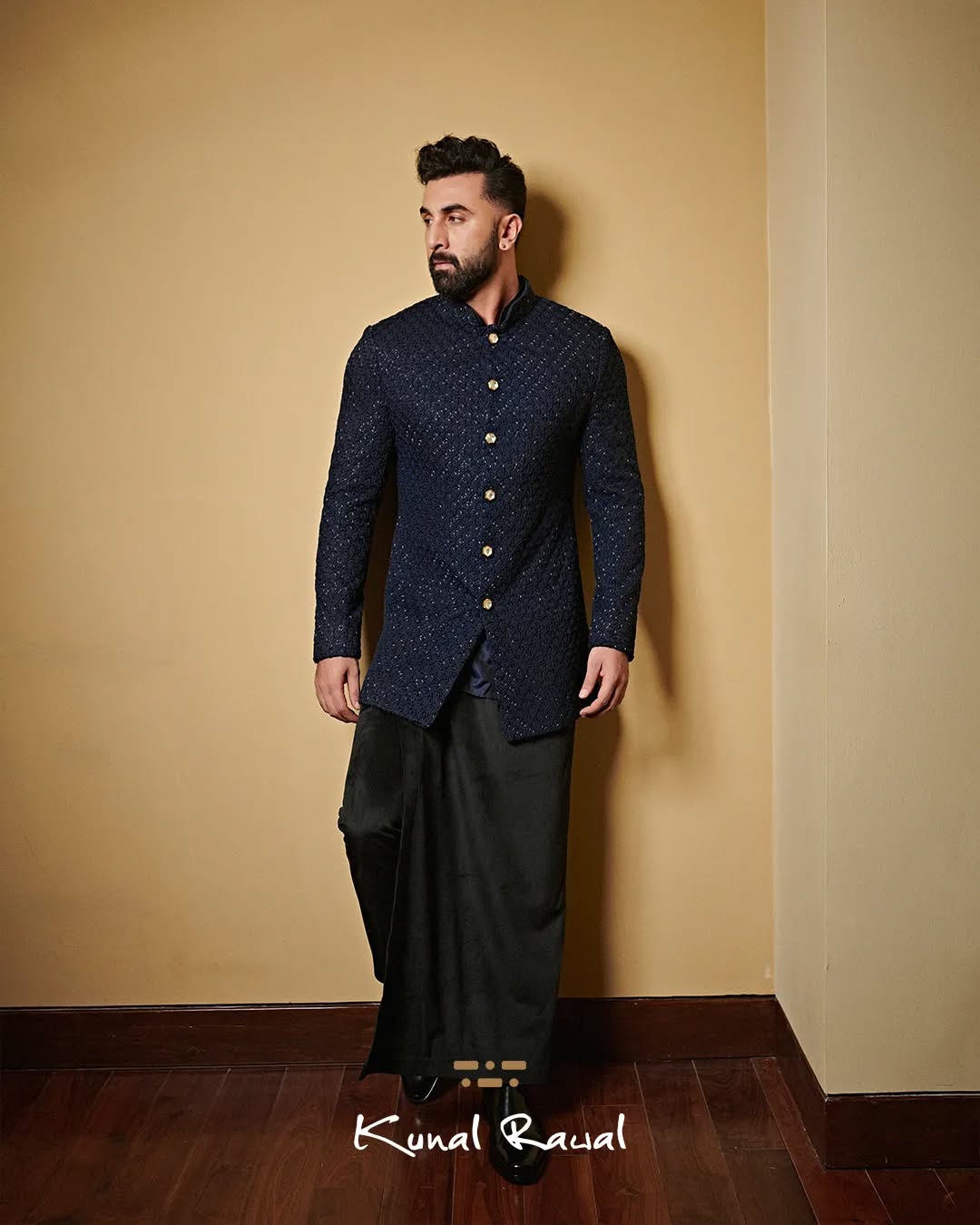
Designer Kunal Rawal, known for reinventing men’s Indian wear, often incorporates kurta buttons as statement pieces. Celebrities like Varun Dhawan and Arjun Kapoor have worn his creations—where the buttons sparkle subtly against monochrome fabrics, adding dimension and design.
Kurta pins have also evolved from plain metallic fasteners to detailed micro-accessories. Many grooms now commission bespoke gemstone pins that reflect their wedding theme or heritage. These elements offer a great way to wear jewellery discreetly—without the pressure of grandiosity.
ALSO READ: The Perfect High-Jewellery Ring For Every Zodiac Sign
Conclusion: Jewellery as Legacy, Identity, and Expression
In 2025, jewellery for Indian grooms is no longer an afterthought—it’s a declaration. A declaration of heritage, of identity, and of personal style. From the grandeur of sarpechs to the subtlety of jewelled buttons, today’s groom is rewriting what it means to dress with intention. These pieces aren’t just decorative; they’re storied heirlooms, symbolic protectors, and style signatures rolled into one. Whether inspired by royal ancestry or red-carpet modernity, the jewellery a groom wears today is about more than looking regal—it’s about feeling rooted. In this renaissance of masculine adornment, every stone tells a story. And the modern-day groom is finally ready to shine.